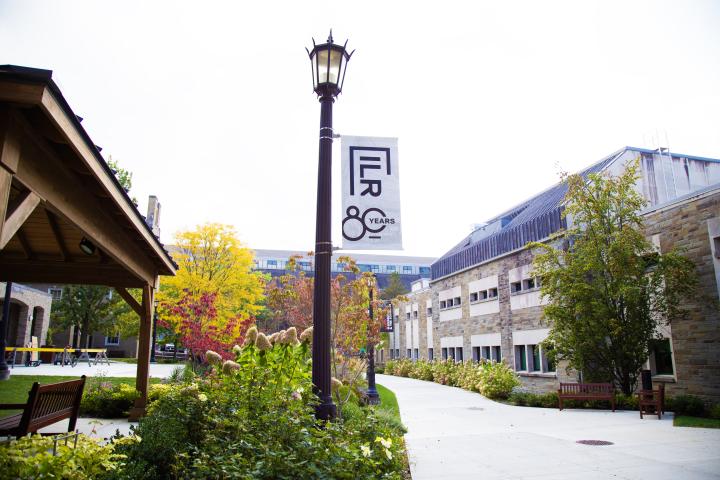
Commemorating the Triangle Fire
A hundred years ago this March, a fire at a New York City sweatshop claimed the lives of 146 young immigrant workers, taking its place as one of the worst disasters since the beginning of the Industrial Revolution.
As the world's foremost repository for information about the Triangle Waist Company Fire, the Kheel Center at Cornell University's ILR School is commemorating the anniversary of the tragedy with an exhibition and newly available information about the victims and the legacy of the tragedy.
This commemoration includes a redesigned website — one of the most popular at Cornell, with 30 million hits in 2010 alone — that provides a portal for visitors to learn about the Triangle Fire, visualize the events, understand the impact and continue their research. The expanded site includes:
- A list of victims with ages, religions, geographic origins and more
- New primary sources, with original text documents such as testimonials, eyewitness accounts and transcripts of the owners’ criminal trials
- Hundreds of historical photographs and illustrations
Visitors can also contribute to the site, signing the guestbook or sending details, photographs and more information that adds to the body of knowledge about the fire.
"The fire was a turning point for New York City, the American Labor Movement and workplace and fire safety legislation," said Curtis Lyons, director of the Kheel Center. "Many of the victims were women, some as young as 14, and they'd recently come to the United States to seek a better life — we owe it to them to remember what happened."
"Part of our mission is to preserve archival information about the fire and present it in a way that's completely accessible, so that people can learn more about its history." Lyons said.
As an archive dedicated to the preservation and dissemination of information about the history of labor and management, the Kheel Center is the steward of many original documents and secondary sources on the Triangle Fire. It is part of the Martin P. Catherwood Library at the ILR School.
The fire at the Triangle Waist Company in New York City, which claimed the lives of 146 young immigrant workers, is one of the worst disasters since the beginning of the Industrial Revolution.
On March 25, 1911, near closing time, the fire broke out on the top floors of the Asch Building in the Triangle Waist Company, located in the heart of Manhattan. Within minutes, the quiet spring afternoon erupted into madness, disrupting forever the lives of young workers. By the time the fire was over, nearly a third of the 500 employees had died.
Many of the Triangle factory workers were women, some as young as 15 years old. They were, for the most part, recent Italian and European Jewish immigrants who had come to the United States with their families to seek a better life.
This incident has great significance, because it highlights the inhumane working conditions to which industrial workers can be subjected. The tragedy still dwells in the collective memory of the nation and of the international labor movement.
As an archive dedicated to the preservation and dissemination of historical information, the Kheel Center is the steward of many original documents and secondary sources on the Triangle Fire.
The Kheel Center's Triangle Fire website -- http://www.ilr.cornell.edu/trianglefire/ -- received 30 million hits in 2010. The portal allows visitors to learn about the Triangle Fire, visualize the events, understand the impact and continue their research.
For the centennial, the Kheel Center renovated and expanded the site, which now hosts:
- A list of victims with ages, religions, geographic origins and more
- New primary sources, including interviews with survivors and victims' families, correspondence on monitoring sweatshops' fire hazards and the flyer announcing the funeral procession
- Hundreds of historical photographs and illustrations
- A graphical model of the ninth floor, indicating the many fire traps
Additionally, the site plays a vital role in spreading information and awareness about the event. Visitors actively contribute to the site's development, sending details, photographs and more information that adds to the body of knowledge about the fire.


